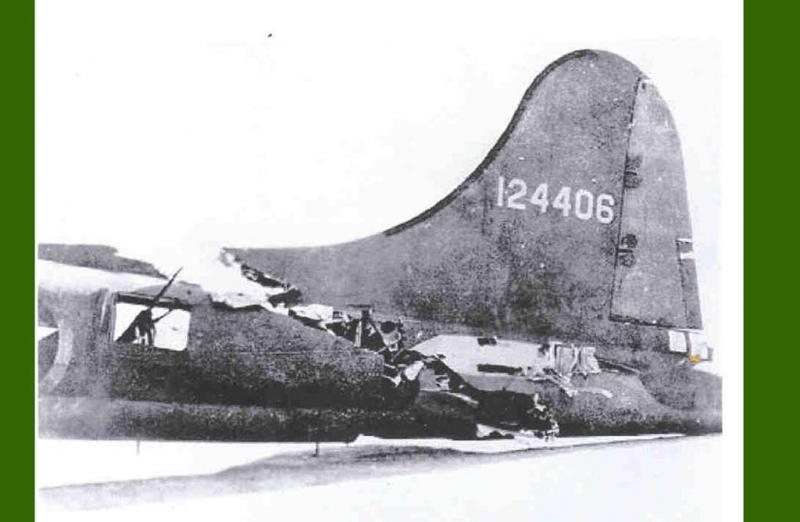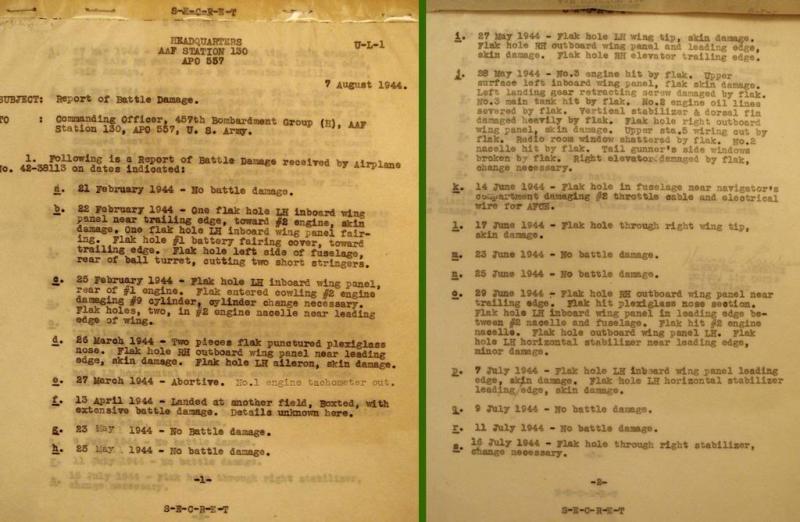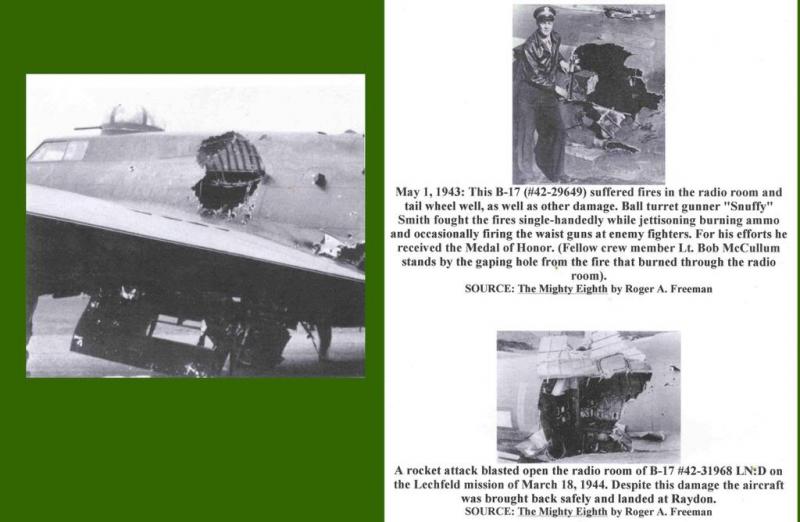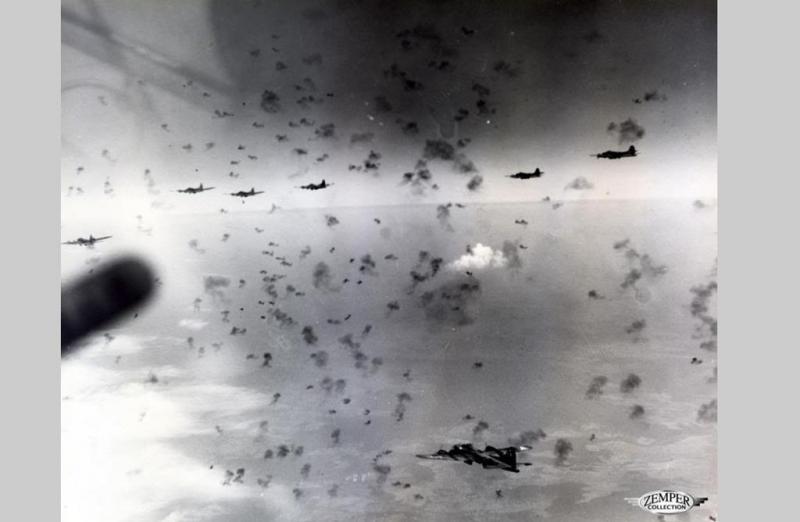That writer also mentioned not being able to see the ground through the flak.
Round trip to Berlin could be nine to ten-hours plus. Strong headwinds could result in a groundspeed of only 2 mph. That made easier targeting for the Ack Ack gunners on the ground. And their radar control was excellent.
By the middle of the air war, combat losses averaged five-percent per mission; an entire air crew could expect to be wiped out in twenty missions.
Dick Johnson, copilot in the 303rd Bomb Group, said that, to hear flak over the engine noises, it had to be within 50 feet; to feel its jolt, it had to be within 25 feet, though it was considered deadly for up to 200 yards.
On one mission, his plane returned with 263 flak holes, “yet no one was hit and the airplane flew as if nothing had happened to it.”
From “B-17 Combat Missions” by Martin Bowman:
“Between January and June, 1944, of the 2,051 crew who started a tour of twenty-five missions, 1,105 of them could expect to be killed in action.”
In another book, one man describes seeing his young commander standing atop the control tower, counting only a few of his squadron’s planes as they returned from a tough mission. As he realized that no more would be coming back, he broke down and bawled his eyes out.
He was only twenty-four; the men he’d send out were mostly younger.















 Register To Reply
Register To Reply












